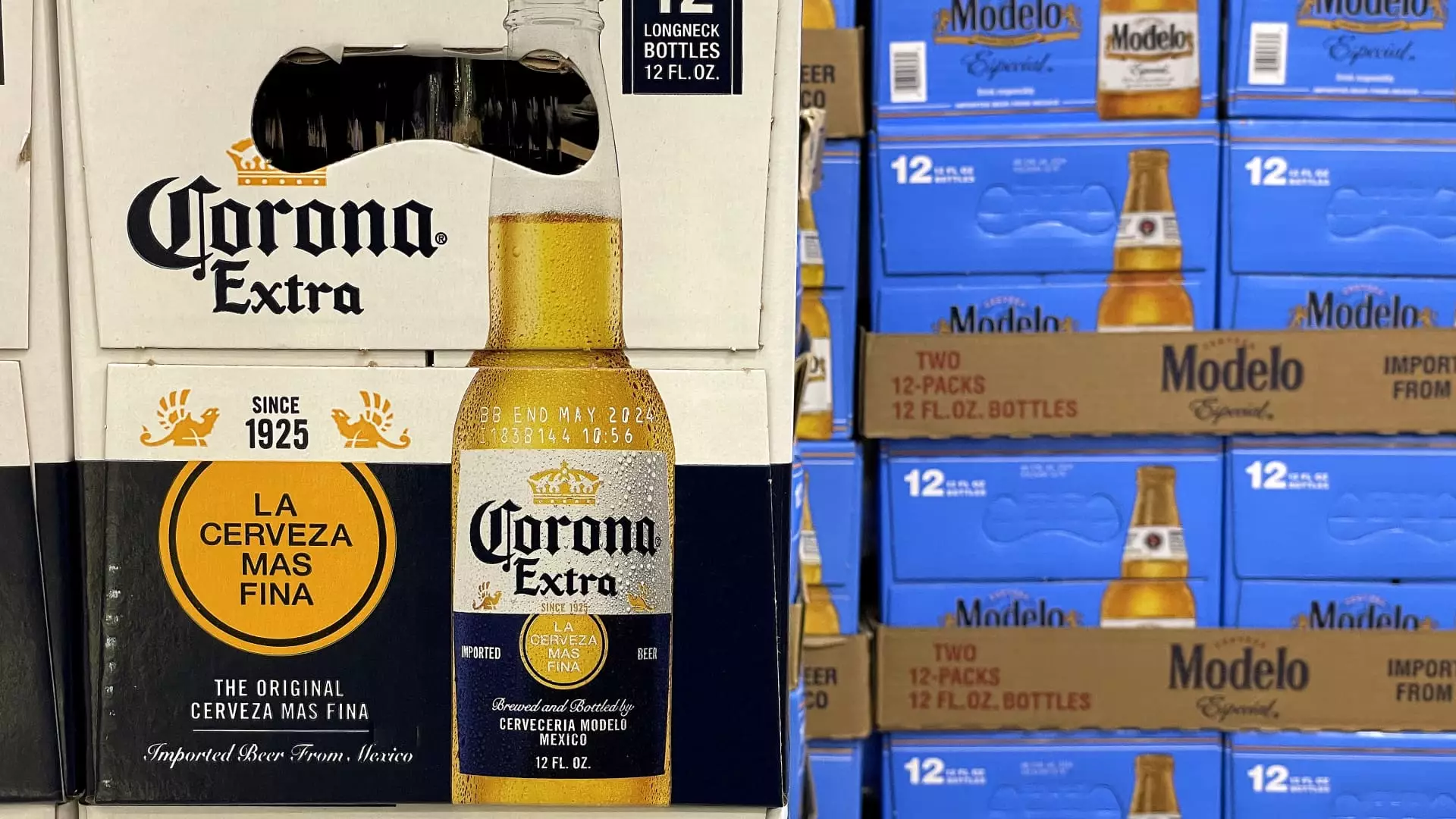Constellation Brands, a major player in the global beverage industry, has been facing significant challenges that have raised considerable concerns among investors and analysts alike. In its latest quarterly results, released just before the market opened on a recent Friday, the company reported numbers that fell short of expectations, prompting a reevaluation of its position in investment portfolios. This article delves into the details of these results, examining both the specific figures and the broader implications for Constellation’s financial health and future prospects.
For the three-month period ending on November 30, Constellation Brands reported net sales of $2.46 billion, nearly stagnant compared to the prior year and notably below the anticipated $2.53 billion, according to consensus estimates from LSEG. The adjusted earnings per share (EPS) of $3.25 also missed expectations, falling slightly short of last year’s figures and analysts’ forecasts. The flat performance in sales and the decline in EPS raises questions about the company’s operational effectiveness and its ability to adapt to changing market conditions.
Despite its reputable beer brands—Modelo, Corona, and Pacifico—holding a significant share of the market, the overall quarterly performance has left a pall cast over future growth prospects. This stagnation comes at a time when competitors like Anheuser-Busch InBev and Molson Coors continue to innovate and capture market share, further compounding the challenges facing Constellation.
While Constellation’s beer segment did experience a modest increase in quarterly sales, growing by 3% year over year to reach $2.03 billion, this growth was insufficient to offset weaknesses in the company’s wine and spirits division. Operating income saw a mild uptick, yet margins shrank, underscoring the difficulties facing the company even in its primary area of strength. Moreover, overall shipment volumes only increased by a mere 1.6%, while depletions rose by 3.2%, both falling short of analyst expectations.
What is particularly disconcerting is that the beer segment, which has historically been viewed as a robust growth engine, is now exhibiting signs of weakness. If demand for these flagship brands continues to decline or stabilize rather than increase, Constellation may need to reassess its strategies to stimulate growth and maintain relevance in an increasingly competitive industry.
The distress signals are particularly clear in Constellation’s wine and spirits division, where a staggering 14% drop in net sales to $431.4 million highlights its ongoing struggles. Operating income shrank over 25% compared to the previous year, exacerbating concerns about viability in a segment that the company has attempted to divest for greater focus on more lucrative brands. This decline is evidence that the company must address its approach toward its portfolio, particularly its underperforming segments, if it is to restore investor confidence.
Moreover, the contraction in operating margins and the notable drop in shipment volumes confirm a troubling trend within this division. While management has acknowledged the plight of the wine and spirits unit, it remains vital for the leadership to develop a coherent strategy to either revitalize this segment or move to streamline operations by divesting less profitable units.
The broader context is equally alarming. Recent trends indicate a shift in consumer preferences, particularly among younger demographics who are increasingly gravitating towards cannabis-based alternatives and products fueled by health consciousness—perhaps influenced by the widespread adoption of GLP-1 weight loss medications. This shift not only alters the competitive landscape but also implies that traditional alcoholic beverages may no longer enjoy the robust growth trajectory once assumed.
Inflationary pressures are also weighing heavily on consumers, and their changing spending habits are contributing to contraction in the alcohol market. As disposable incomes are increasingly strained, even established brands like Corona and Modelo may find it challenging to retain their customer bases.
Future Outlook and Strategic Considerations
Management’s revised guidance for the fiscal 2025 period reflects a cautious approach moving forward. While free cash flow expectations have seen a slight increase, other key metrics have been adjusted downward. This includes significant recalibrations to sales growth targets and operating income projections across both wine and spirits and the beer segment. Such revisions indicate that even management is bracing for continued challenges in an unpredictable market environment.
While Constellation Brands has established itself as a heavyweight in the beverage world, its current challenges cannot be overlooked. Disappointing quarterly results and an unclear path forward warrant a reassessment by investors. The strategic focus on divesting struggling units while nurturing flagship beer brands presents a potential, albeit uncertain, path to restoring corporate health. As the competitive landscape evolves, only time will tell if Constellation can reinvent itself and reclaim its growth momentum.

